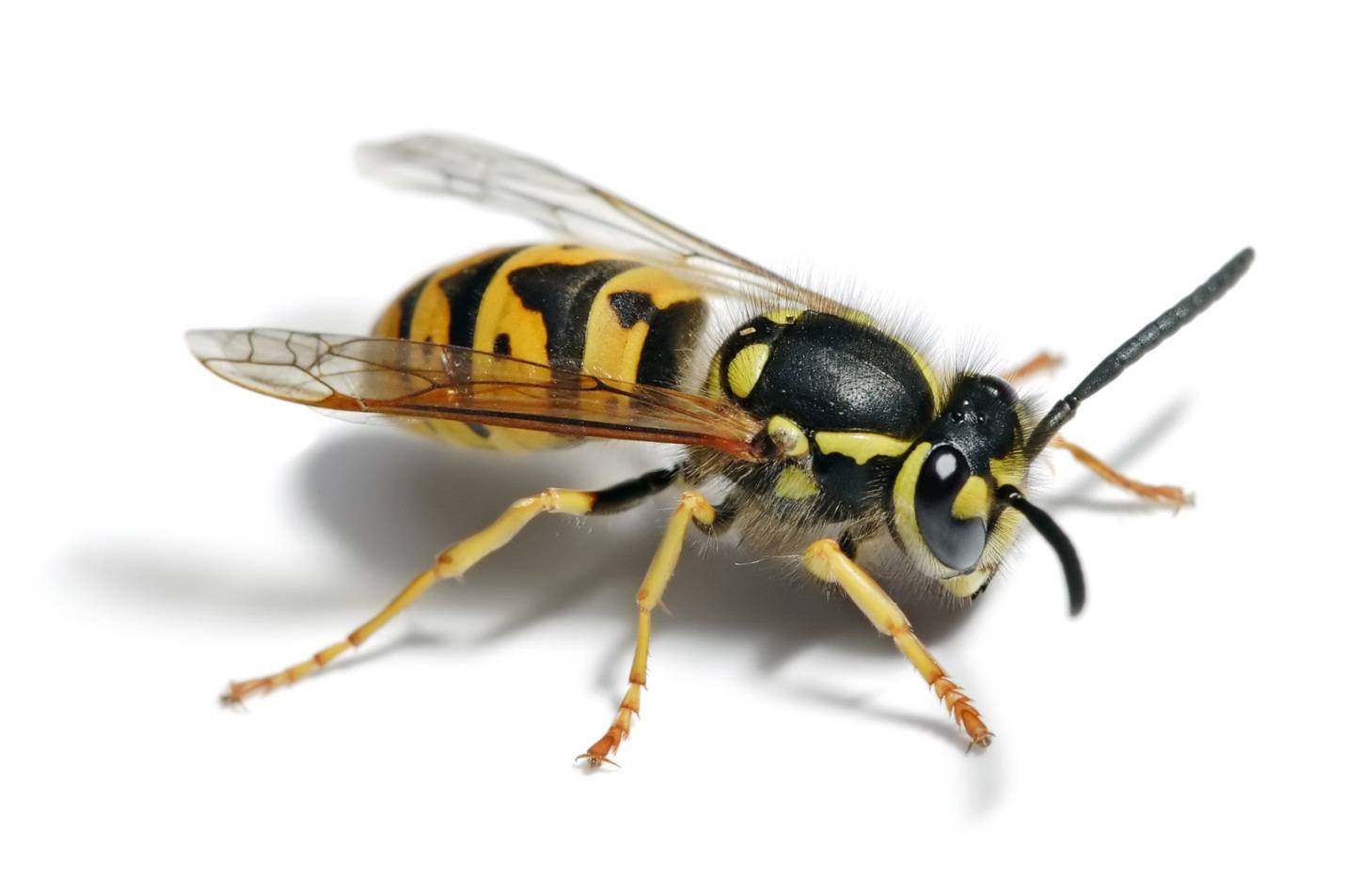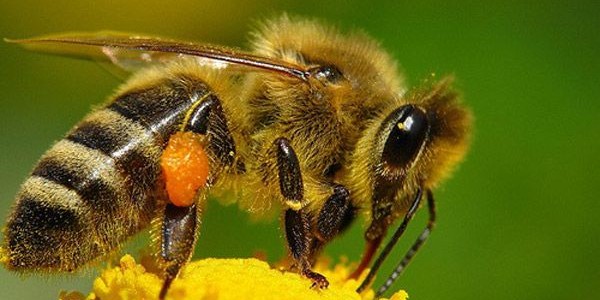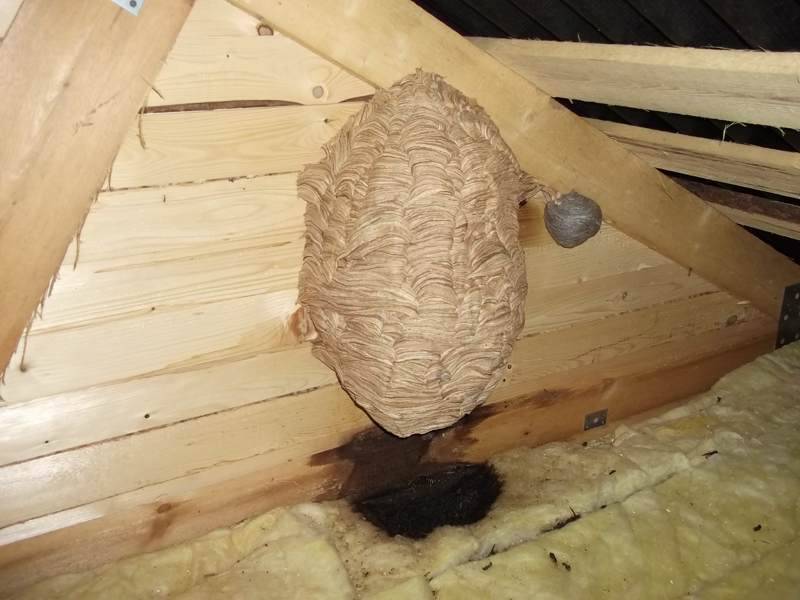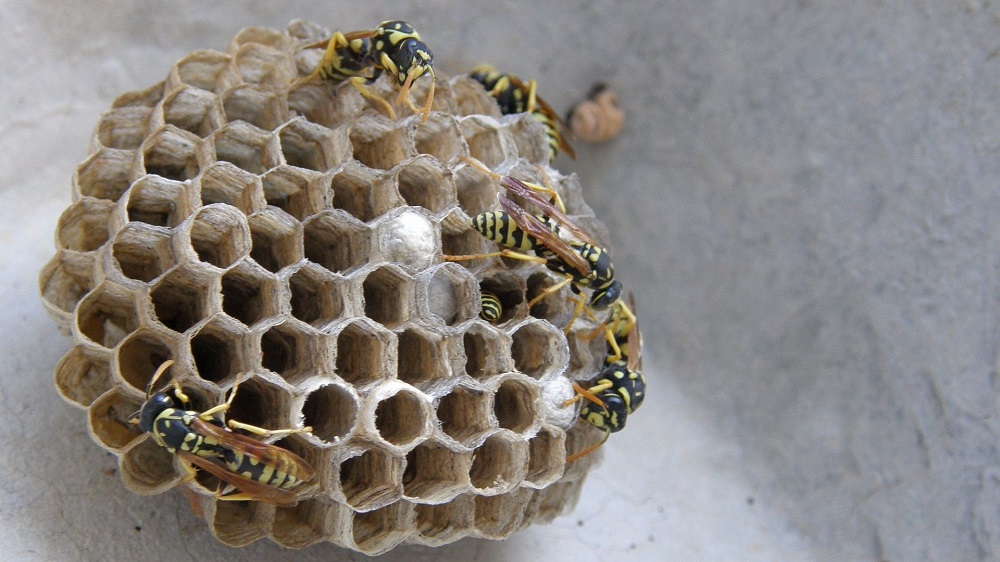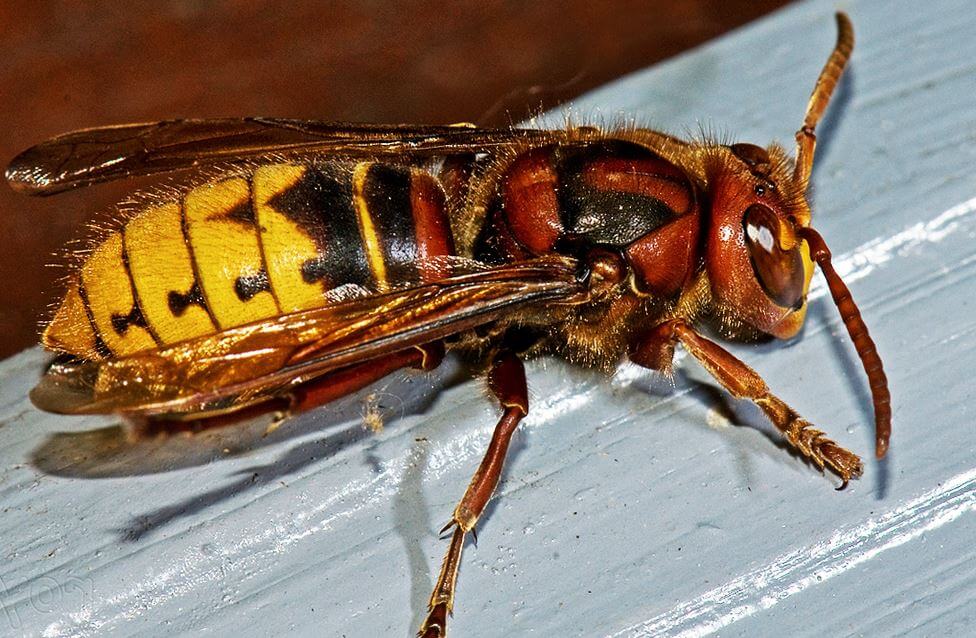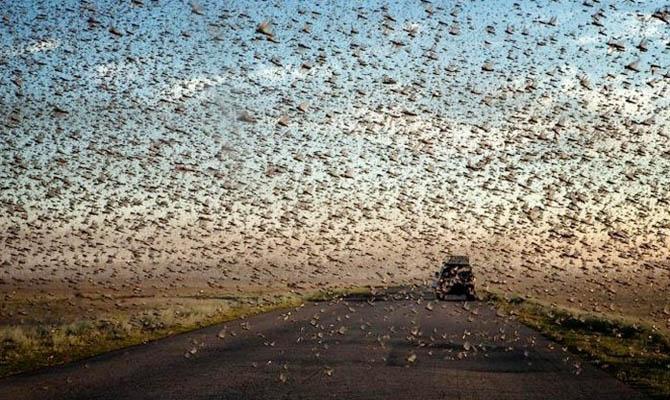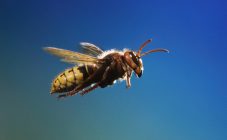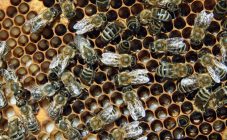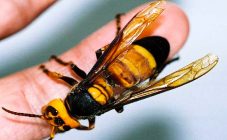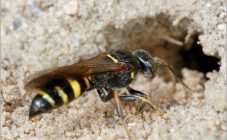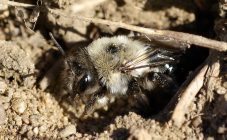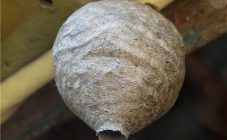Content:
Insect bites: wasps, bees, bumblebees, hornets in the summer, unfortunately, are inevitable. They are painful, unpleasant, and for people suffering from allergic reactions, they are extremely dangerous. About bites of wasps, bees, as well as which of them leaves a sting when bitten, what to do in such a case, how to prevent and protect your home and area from these insects, how to provide first aid will be described in this article.
Does a wasp leave a sting when bitten
Wasps, bees and other stinging insects behave aggressively, sting humans and animals only when defending themselves from various external factors that threaten their existence. This can be an invasion of their home, destruction of nests, an invasion of their territory, an attempt (or accident) to grab, catch an insect. It is even more dangerous that nearby individuals react to the smell of poison and can join the attack, which leads to massive bites of the victim by the whole swarm. But the insect will never just sting a person. Wasps are extremely vengeful. There have been cases when a person who destroyed a nest on the territory of his site or dwelling was stung by wasps at the nest site after a certain time. Wasps are gregarious insects and usually live in a large group in one nest. Very often people mistakenly call a sting a bite, which is fundamentally wrong - it is the sting piercing and the injection of poison that causes pain.
When defending, these insects use a sting - a pointed organ used to inject a poisonous substance under the victim's skin. In Hymenoptera, the sting is located in the back of the abdomen and is a modified ovipositor. Many people often confuse who leaves the sting: wasps or bees. A sting after a wasp sting does not remain under any circumstances. Wasps, unlike bees, when defending themselves from external factors that threaten their existence, use not only their stings, but also their jaw apparatus, biting the object of their alarm. Their sting, unlike that of a bee's, has no chipping and when stinging, they do not cripple it, so the sting of the wasps does not remain in the body of the victim when bitten. The myth that a wasp sting must be removed from a wound is absolutely groundless.
Does a bee leave a sting when bitten
Bees, unlike wasps, leave their sting in the wound when bitten. A unique feature of honey bees is that the sting of workers has a sawtooth shape. When mammals are stung, the sting gets stuck in the skin and breaks out of the bee's body, thus leading to its death. The sting is associated with its own nerve ganglion, with the result that the sting continues to secrete poison for several minutes.
A bee sting, due to its serrated shape, always remains in the body of the victim and should be removed immediately. Bees are less aggressive than wasps, with the exception of certain breeds, such as the Central Russian bee breed.
How to understand whether a sting remains in the human body after a wasp sting
People unfamiliar with the characteristics of stinging insects often believe that the wasp left a sting after being bitten. It happens that insects are simply confused - a wasp and a bee of a certain breed may be similar in appearance.So, does the sting of a wasp remain in the human body after bites? The answer is unambiguous - no, the sting of a wasp is designed in such a way that it can sting and inject poison an unlimited number of times throughout its life and not die after its first and last sting, as happens with a bee.
The bite site always swells very much, turns red, hurts. The pain is usually severe and burning. It is necessary to understand that if a wasp has bitten, then there is no sting in the wound.
What to do if the sting of an insect remains in the wound: first aid
Wasps and hornets are the most aggressive insects and they can sting at the slightest provocation, at the slightest suspicion of their threat, in contrast to bees, which are much less aggressive and which most often sting when they are stepped on, sat down, accidentally grabbed or openly encroached on on their home. The main symptom of a bee sting, as mentioned above, is that it leaves a sting in the skin. The poison from the sac of the gland enters the human body for more than a minute. And the only sign of a wasp or hornet sting is only the puncture point of the skin. After being stung by insects, the area around the wound quickly turns red and a seal forms around it under the skin (this is the liquid under the skin that collects). It dissolves after a few hours, but itching may persist for more than 24 hours. The poisons injected when stung by insects differ in their chemical composition. Wasp venom is not alkaline, and bee venom is only mildly acidic. The chemical compositions of these poisons are more complex than it is believed, and therefore the traditional treatment after stinging a wasp with vinegar and a solution of soda after stinging a bee brings only minor relief.
When stinging by a bee, it is necessary to remove the sting from the wound as quickly as possible in order to reduce the pain. This is done carefully using tweezers, a knife or nails. The wound should be washed with soap and water. Then, to reduce swelling, a cold compress is applied to the wound, for example, it can be ice wrapped in a cloth. Ointments and balms, including anti-inflammatory and wound-healing ones, also work well after treating a wound (for example, salve and salve balm).
To relieve itching, apply an antihistamine cream to the stung area or take an antihistamine tablet by mouth. You can also use sunburn products to cool the wound and relieve itching. If the itching is very severe, then you need to see a doctor for a steroid ointment. There may be more severe swelling around the wound. If the swelling is very large or does not go away for a long time, then you should definitely consult a doctor.
When do you need to call an ambulance
Call an ambulance immediately if any of the following symptoms appear after the sting:
- swelling around the throat, mouth, or tongue that makes breathing and swallowing difficult;
- wheezing as well as choking or shortness of breath;
- weakness, fainting, dizziness, or headache;
- any chest pain;
- nausea, stomach cramps, vomiting.
People who have been stung two or more times in recent years have the highest risk of developing allergies. There is also another risk group - those who suffer from other forms of allergy (pollen, animal hair, etc.). Also, be sure to call an ambulance for a massive sting by insects, if stung not one or two, but a swarm.
How to avoid being bitten by a stinging insect
People who are sensitive to stings should take steps to reduce the risk of being stung by insects:
- You can't wear bright clothes and use perfumes and deodorants with a strong aroma - they attract insects.
- Pants, long sleeves, shoes and hats should be worn.
- Apply repellents to exposed skin.
- Use candles or other insect repellent products.
- Do not leave open sugary drinks or food - bees, wasps, hornets immediately fly at them.
- Before sitting or lying down, you need to make sure that there are no stinging insects nearby.
- It is necessary to avoid places where there are many wasps, bees, hornets, such as orchards, apiaries.
- When collecting fallen fruits from the ground, gloves must be worn.
- Wasps or bees should never be crushed - this increases the likelihood of stinging and attracting a swarm of these insects.
- You can't wave your hands and panic - this can also excite insects, they will perceive it as aggression. When you are in a place where there are a lot of stinging insects, you need to leave calmly and slowly.
- A wasp that has entered the house must be sprayed with insect killing spray; you should not try to catch it yourself with a rag or towel - the sting can pass through the fabric. A fly swatter can irritate an insect and it will defend itself by attacking.
- It should be remembered that wasps, hornets, bees are afraid of water. In the event of an attack by a swarm, you can hide in the water if there is a nearby reservoir or water tanks of sufficient size.
- if there are many wasps or bees in the garden or in the house, it is likely that there is a nest nearby. It is important to eliminate it as early as possible - wasps become very aggressive at the end of summer and it is much safer to remove their nest before this period.
How to destroy a hornet's nest
Wasps and hornets build their nests in attics, sheds and outbuildings, livestock houses (where they can also sting animals, which can lead to disastrous consequences). The nest, as a rule, at the very beginning, when eggs are only laid there or larvae are hatching, is still very small. It is recommended to destroy nests at this stage, after making sure that there is no adult in the nest. An overgrown large nest may be full of wasps. It is necessary to destroy it in any case - wasps can cause irreparable harm to people or pets. You can contact a specialized pest control service for professionals to solve the problem.
You can destroy the nest yourself. But you have to be careful. The wasp nest is always reliably guarded, any invasion of the territory is regarded by insects as a threat. An immediate attack will follow, even when there is absolutely no reason for it.
When starting to destroy the nest, you need the appropriate protective equipment:
- tight clothing, preferably multi-layered, good in tarpaulin;
- a beekeeper's mask is required;
- durable gloves, preferably rubberized.
To destroy nests, poisonous sprays are recommended. You need to take a large bag without holes, cut off the handles and put it on the honeycomb. Then fix it with tape, cut the far edge, release the spray into the cut, tie the cut, remove the bag and the dead wasps after a day.
Also, the nest can be sprayed with pesticides, if it is not indoors, but on the site and not on a tree, then you can treat it with a combustible mixture and burn it.
A more complex problem is earth wasps. They are larger in size and arrange their dwellings underground, which does not always allow finding them in time. Their dwellings can be filled with cement, water (boiling water, about 2-3 buckets), carbide (put in a hole, fill it with water, plug the exit with rags soaked in gasoline).
Speaking about the destruction of wasps, it is necessary to understand that they harm humans, being aggressive and vindictive insects that can sting repeatedly, being extremely dangerous, especially for children and allergy sufferers. In addition, wasps are carriers of diseases, as they feed on waste from garbage.It is not recommended to destroy bees, since they are beneficial, they are less aggressive and they live in hives in apiaries, and do not build nests in human dwellings.
The question: whether the stings remain after wasp bites is resolved - definitely not. By following the instructions above, you can avoid stings by wasps and bees, as well as get rid of insects that are dangerous to humans.
